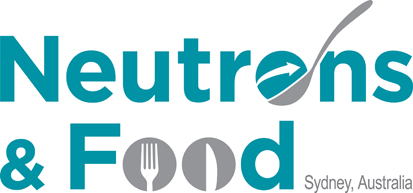Speaker
Description
Milk, a water-based colloidal system, is comprised of fat globules (FGs), casein micelles (CMs), soluble proteins and ions. The mechanism of cheese formation from milk, through the induced aggregation of CMs by the addition of chymosin, is a complex soft matter process. This process has been widely characterized using invasive experimental methods (confocal microscopy, electron microscopy, etc.) that have probed milk and cheese at length scales from 0.1nm to 1μm, providing two-dimensional images of the organization and structure of the main components in milk, viz. CMs and FGs. Given that these techniques could impose artifacts on the system, in the present study we utilized ultra-small angle neutron scattering (USANS) to investigate the coagulation of homogenized whole (HW) and skim milk in natura. The USANS instrument probes length scales from 0.1μm to 20μm, providing information on size of the clusters, surface characteristics, three-dimensional organization, scattering-length density (SLD), polydispersity and volume fractions of the main components in the milk and cheese samples. An advantage of using neutrons is the ability to utilize contrast matching, a technique that varies the scattering-length of the hydrogen-deuterium component in the system to effectively blend certain objects (CMs or FGs) into the background, so as to observe a clean signal from the object of interest. Raw USANS data can be analyzed using a variety of models to describe the micron-structure of the scattering objects. We have implemented two analytical models, Guinier-Porod (GP) and Bimodal Shulz-Spheres (BSS). These models provide us with the most persuasive interpretation of the process of milk coagulation. Through examination of the slopes using the GP model, we found correlations of coagulation time with the CM aggregate thickness and surface roughness, as well as the shape or packing symmetry of the aggregate. Analysis using the BSS model enabled us to identify the polydispersity, volume fraction, SLD and average radii of FGs and CMs in HW milk. With this model it is possible to decompose the combined scattering effects from two objects (assumed to be spheres) within a liquid medium, while taking the variability in radii of the polydisperse objects into account. Contrast matching confirmed the observed three-phase system by running a series of HW milk samples diluted with different ratios of D2O to H2O using the predicted SLDs and given volume fractions. Blending of the FGs in HW milk (3.25 wt.% milk fat) with the background signal proved successful when compared to the skim milk (< 0.5 wt.% milk fat) data, as it showed little to no difference (Figure.[1]). Our findings demonstrate the value of USANS in combination with GP and BSS modeling techniques as analytical tools for the characterization of the micron-structure of commercial milk in natura, as well as coagulated milk obtained via enzymatic action.
![Demonstration of the Contrast Matching technique with HW milk data acquired from our USANS measurements. Plot displays HW milk (blue), HW milk diluted with a 20:80 ratio of D2O:H2O solution (red) and skim milk data (green).][1]

